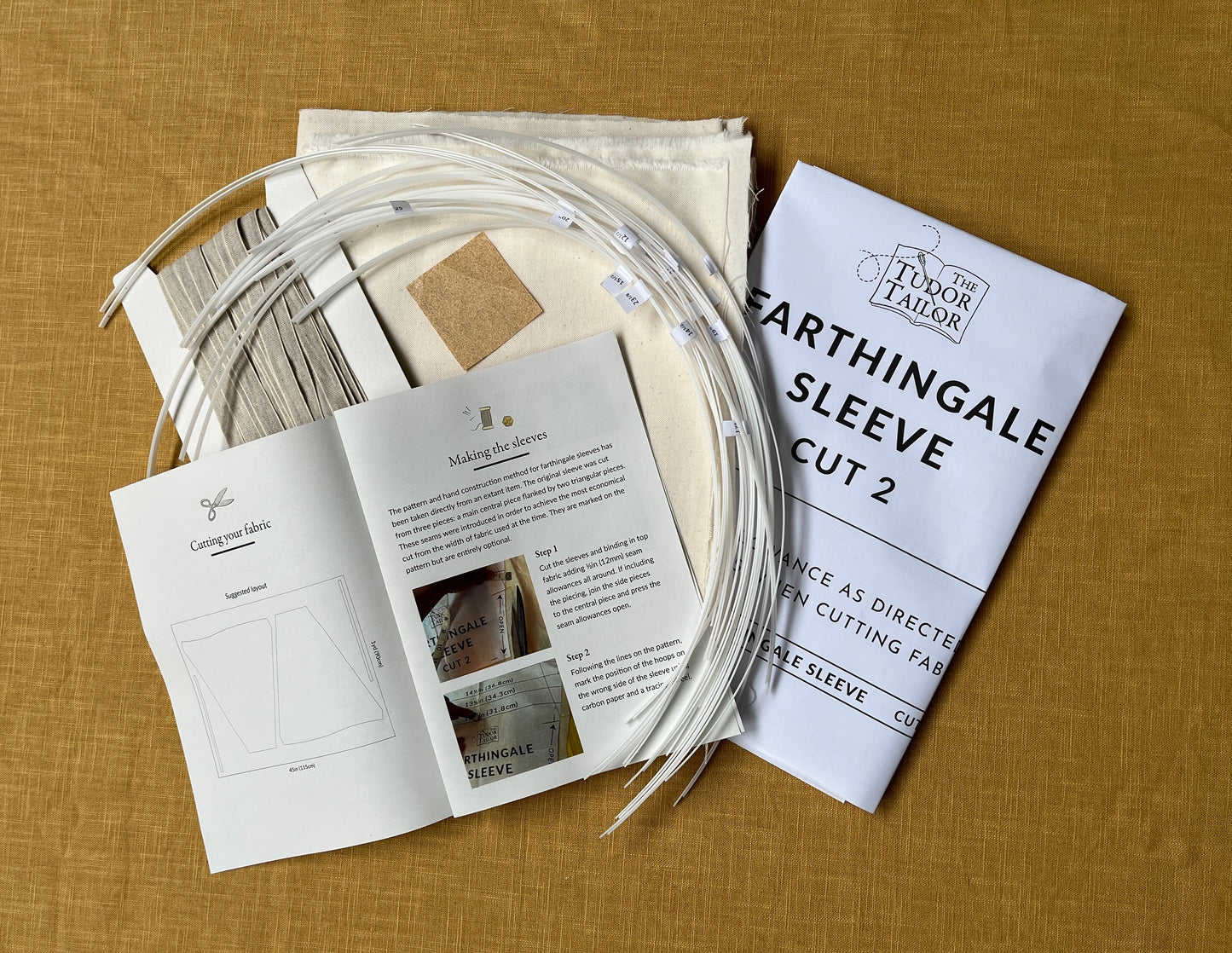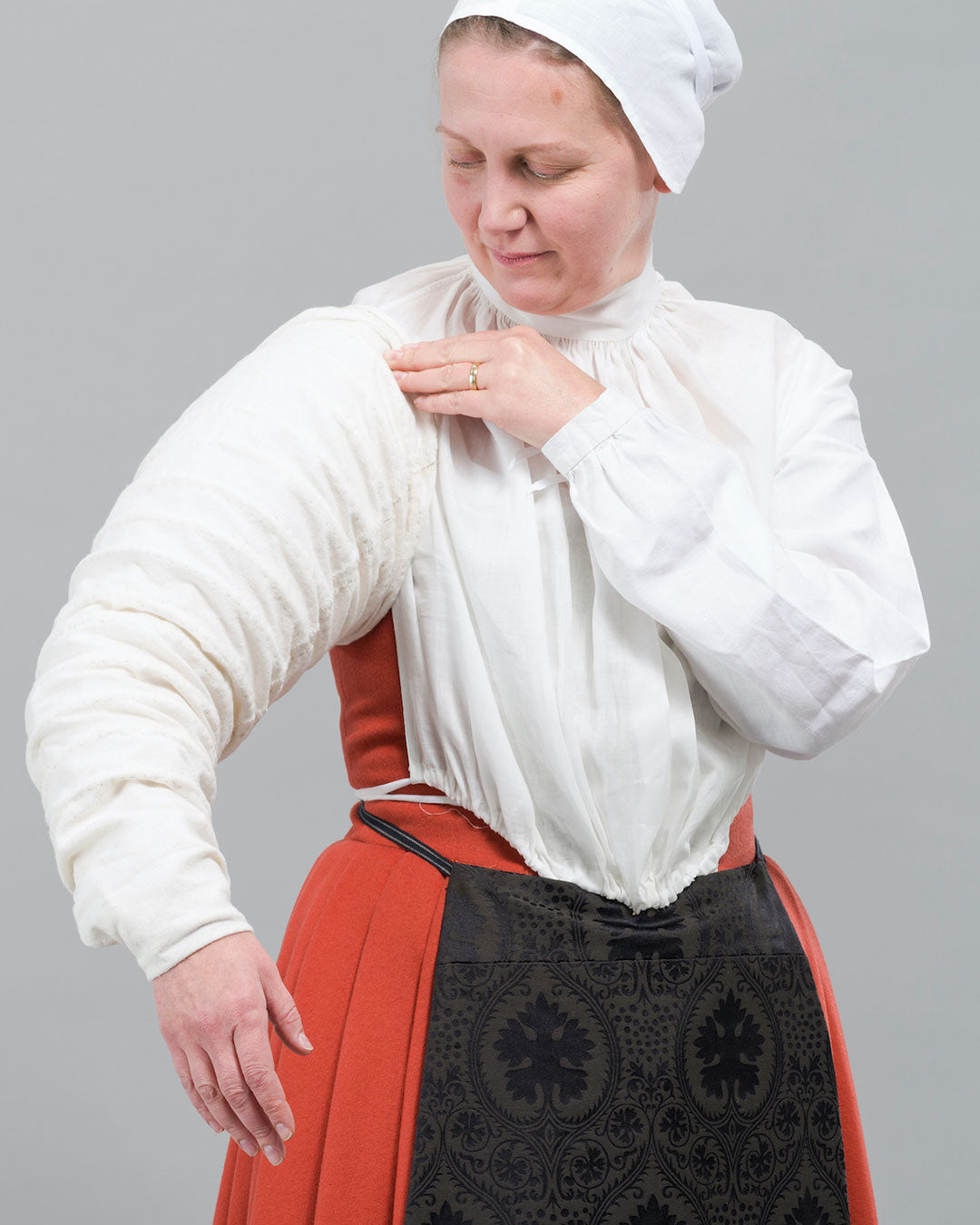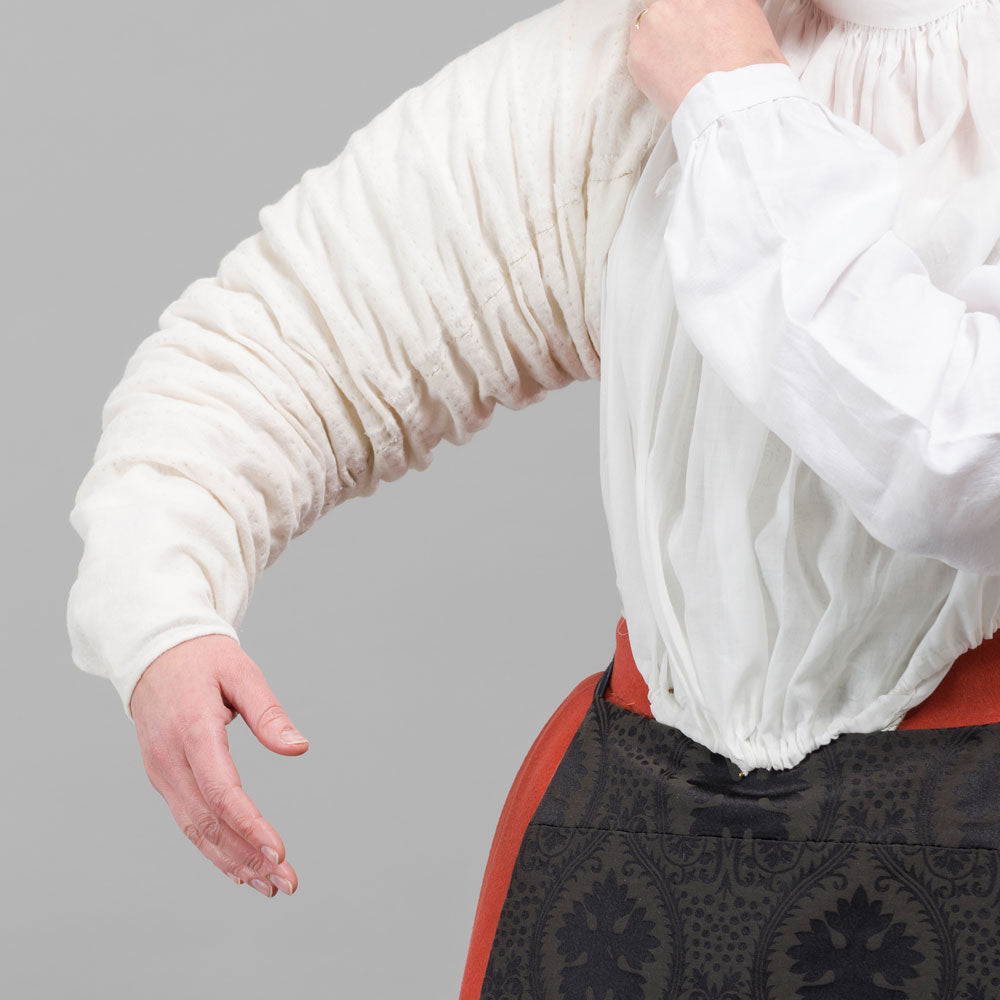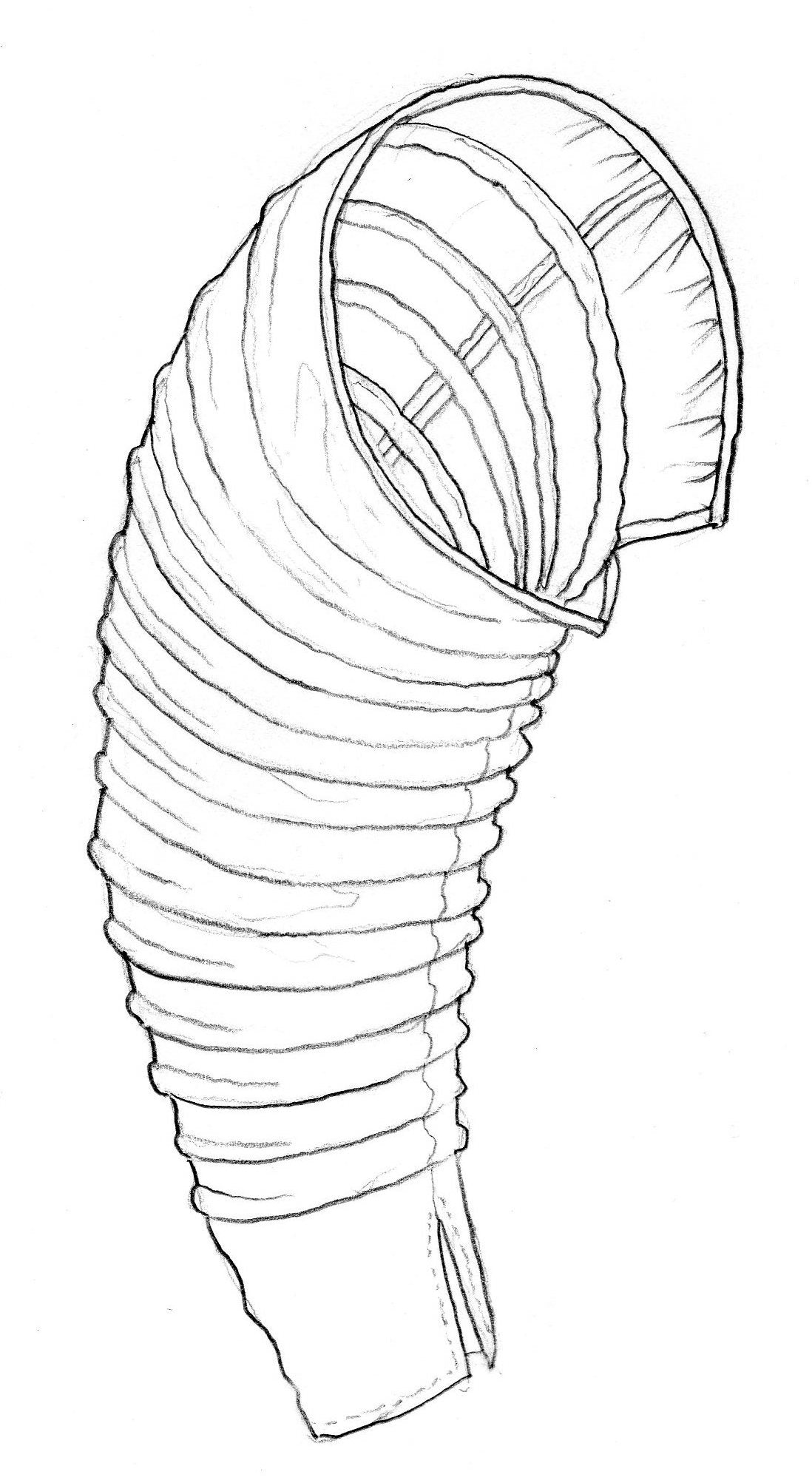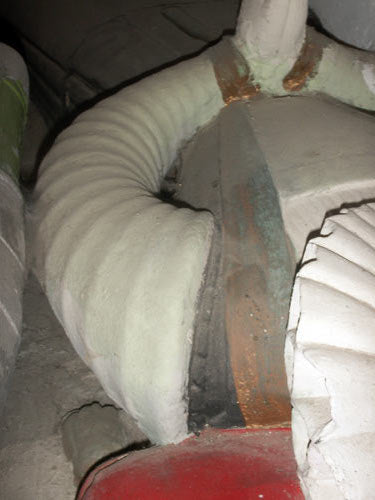Kit for a pair of farthingale sleeves
Kit for a pair of farthingale sleeves
Couldn't load pickup availability
NEW - Tudor Tailor exclusive!
Everything you need to make a pair of farthingale sleeves for a man or a woman. The pattern may also be altered for a child. The synthetic whalebone has been pre-cut to the required lengths and drilled for convenience.
Kit includes:
- Paper pattern
- Instructions
- 1yd (0.9m) of brushed cotton
- 16yd (14.5m) of synthetic boning, pre-cut and drilled
- 16yd (14.5m) of linen tape
- Sandpaper
Additional equipment (not included):
- Sewing needle
- Cotton or linen thread
- Scissors
- Tailor’s chalk
- Carbon paper and pattern tracing wheel
- Dressmaker’s pins
The Tudor Tailor’s pattern and instructions were drafted directly from the study of an original example probably dating from the 1590s or very early 1600s. It was recently discovered among the historical garments of the Willoughby family and offers clear guidance for a reconstruction.
The extant support has a matching oversleeve of printed silk satin. It is also stiffened but with one single support at the shoulder. The farthingale sleeve gives it the characteristic hooped profile seen in portraits and on effigies of the era.
Farthingale sleeves are first mentioned in England in the wardrobe accounts of Queen Elizabeth I in the 1580s where they are described as being made from fustian ‘bented’ or stiffened with whalebone. The extant sleeve is made in similar materials to those described in the royal accounts.
The hooped supports created a foundation for gown sleeves which had become increasingly full during the Elizabethan era. The fashion for them moved rapidly through society. Only four years after their first mention in royal wardrobe accounts, farthingale sleeves start to make an appearance in the household accounts and personal correspondence of ordinary gentlewomen.
Farthingale sleeves are also depicted on several effigies sculpted in the 1590s and early 1600s such as that of Anne Steward (née Shouldham) on a family monument (1603) in Holy Trinity Church, Marham, Norfolk. They had become a feature of lowly women’s dress by the early 17th century. In 1611, the Worshipful Company of Grocers decreed that ‘maid-servants and women-servants’ should not wear any ‘sleeves of wire, whalebone or with any other stiffening’.
Share
